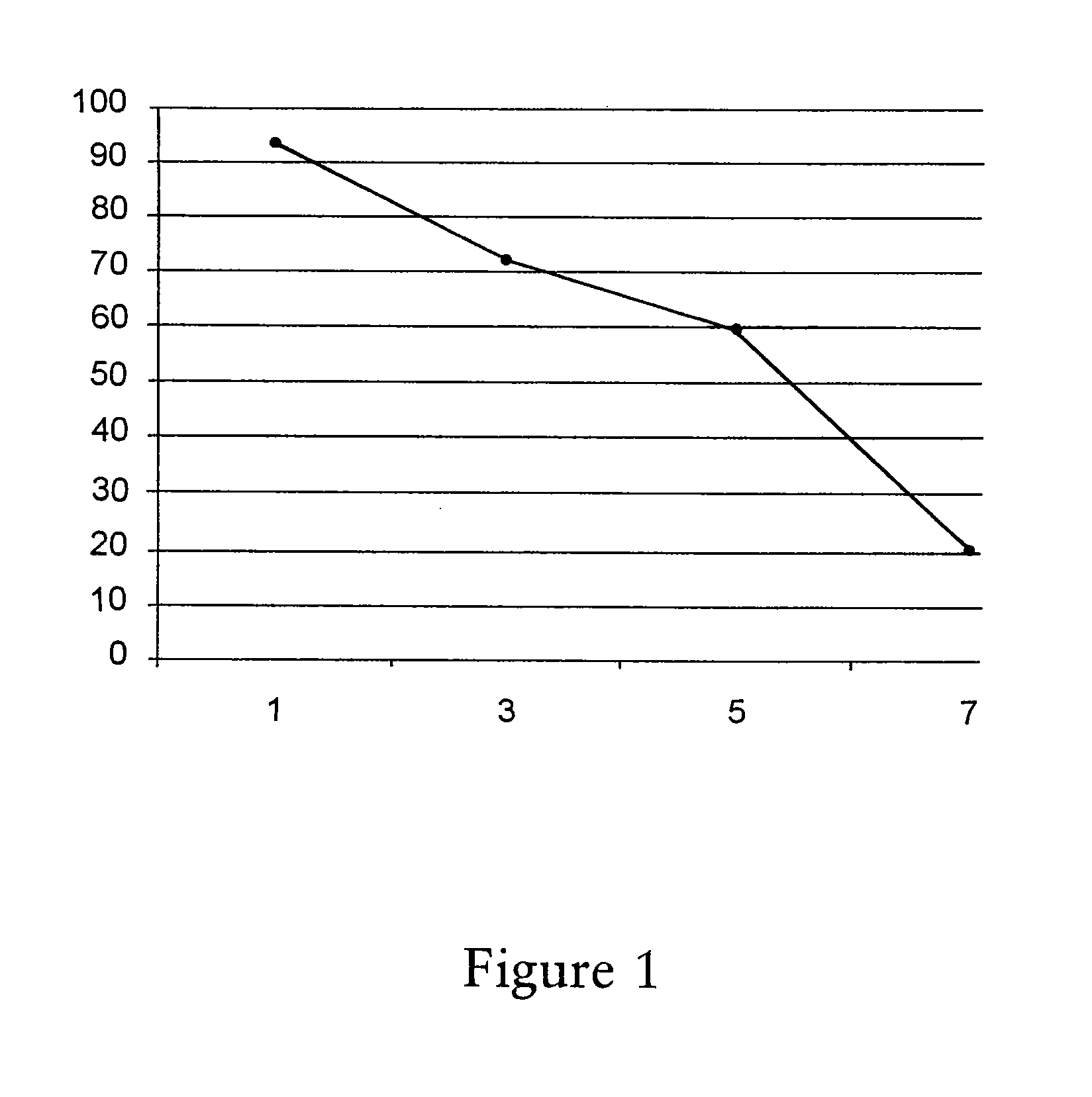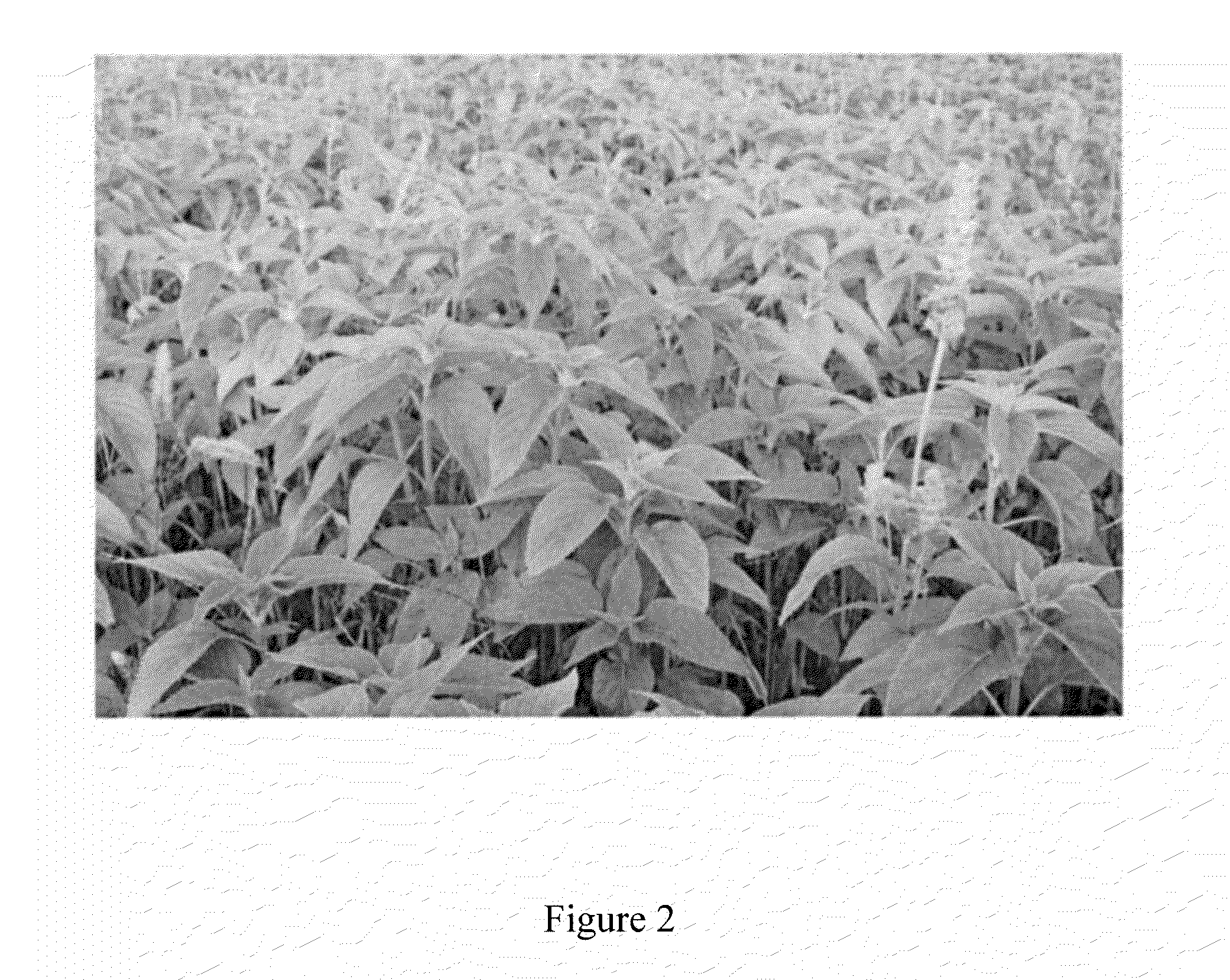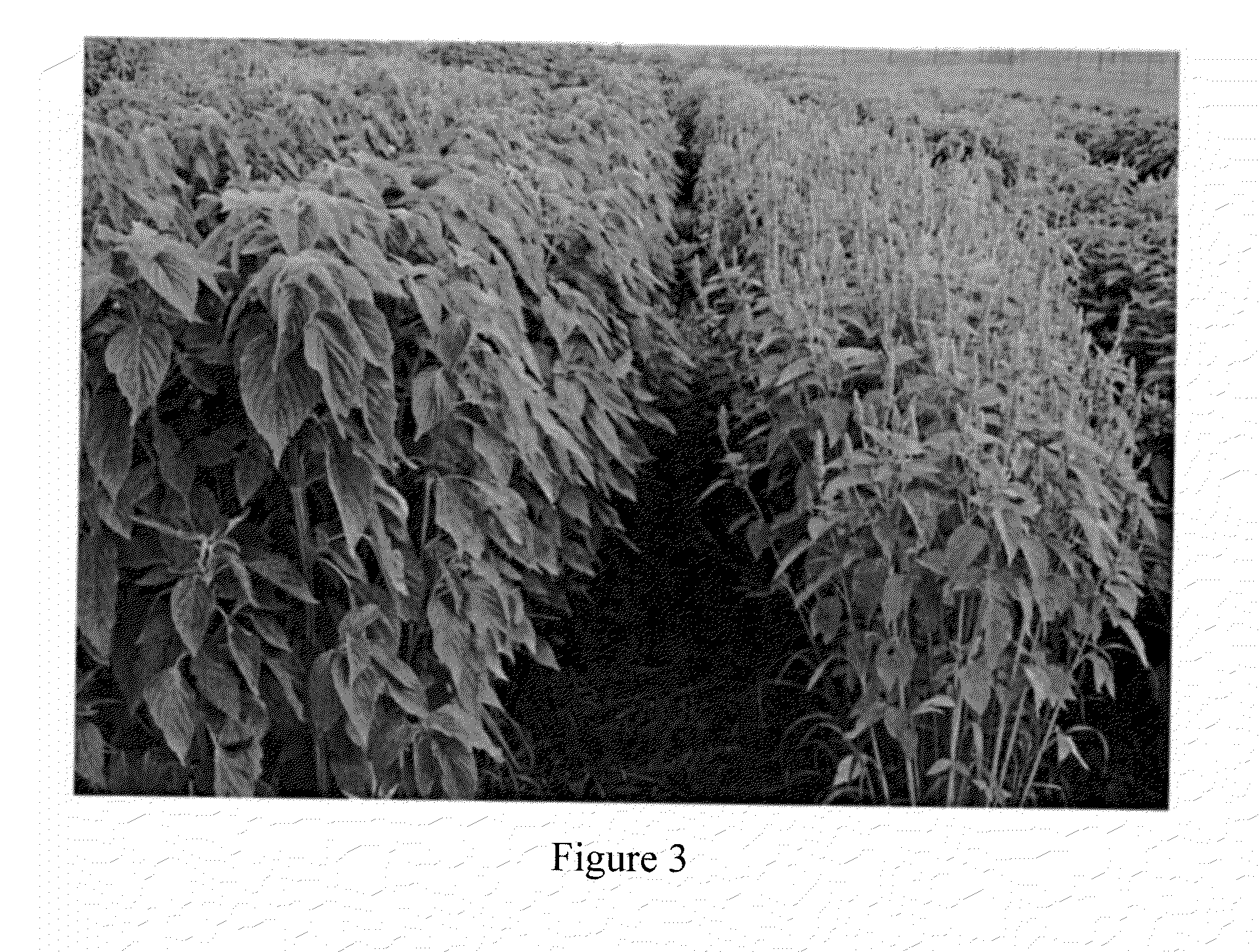Early flowering chia and uses thereof
a technology of chia and early flowering, which is applied in the field of early flowering chia, can solve the problems of limiting the potential to bring, and achieve the effect of increasing the production of salvia hispanica and the early flowering phenotyp
- Summary
- Abstract
- Description
- Claims
- Application Information
AI Technical Summary
Benefits of technology
Problems solved by technology
Method used
Image
Examples
example 1
Materials and Methods
[0066]Seed Materials
[0067]Chia seeds used in this experiment were obtained from www.chiaseedandoil.com shipped from Tucson, Ariz. In certain experiments, seeds of the cultivar “Pinta” were used.
[0068]Mutagenesis
[0069]EMS mutagenesis: Seeds were soaked in ethyl methanesulfonate (EMS) diluted with deionized water at different concentrations for 6 hours at room temperature. Seeds were rinsed in excess amounts of water four times. Seeds were then pipetted on the surface of potting mix. Seed germination was observed at 7, 14 and 21 days after planting.
[0070]Gamma ray mutagenesis: Seeds were irradiated in a Shepherd Mark I—30 Irradiator at the Department of Radiation Medicine, University of Kentucky.
[0071]Screening for Early Flowering Mutants in the M2 Population
[0072]In order to screen for early flowering mutants, M2 seeds were planted in bulk in the field of Spindletop farm in Lexington, Ky. in summer 2008, (longitude W84.5, latitude N38.1). The planting date was Ju...
example 2
Optimizing EMS-Induced Mutagenesis
[0080]Chemical mutagenesis by ethyl methanesulfonate (EMS) was used in an attempt to produce early flowering mutants. Various concentrations of EMS were evaluated from 0.1 to 8% at small increments including the standard 0.25% used for Arabidopsis and 6% EMS was found to produce ˜50% seedling lethality and 0.02% white plants among the surviving 50% (Redei et al., 1992; Weigel et al., 2002). Lethality was ˜80% with 8% EMS.
[0081]Thus the optimal dose of EMS was studied to achieve about 50 percent germination rate. Chia seeds were treated with different concentrations of EMS, 0%, 3%, 5% and 7% respectively. Germination rate was observed as shown in FIG. 1.
[0082]From the germination chart, 50% germination can be obtained by treating seeds with a 6% EMS concentration. This concentration was found to be very high for EMS treatment compared to recommended EMS concentrations for other crops. Fatty acid mutations in flax was achieved by treating flax seeds w...
example 3
Screening for Early Flowering Mutants in M2 Population
[0084]Flowering was monitored of the M2 plants in the field in 2009 twice a week. Flower buds of the earliest flowering mutants formed 55 days after planting where the day length was 12 hours and 16 minutes. No flower buds were found in control plots and in non-mutagenized border rows on that date. FIG. 2 shows an early flowering plant among F2 population in the field. There were 22 early flowering plants found in approximately 165,000 plants of the M2 EMS-mutagenized population which is 0.013%. In the gamma radiation-mutagenized population of approximately 185,000 plants, there were 46 early flowering plants which is 0.024%. The rest of the field started to form flower buds on the second week of October. Early flowering plants were marked and transferred to a greenhouse before the killing frost on the third week of October. Non-mutagenized plants were killed by frost before blooming (petal opening). FIG. 2 is a picture showing a...
PUM
| Property | Measurement | Unit |
|---|---|---|
| Time | aaaaa | aaaaa |
| Dimensionless property | aaaaa | aaaaa |
| Dimensionless property | aaaaa | aaaaa |
Abstract
Description
Claims
Application Information
 Login to View More
Login to View More - R&D
- Intellectual Property
- Life Sciences
- Materials
- Tech Scout
- Unparalleled Data Quality
- Higher Quality Content
- 60% Fewer Hallucinations
Browse by: Latest US Patents, China's latest patents, Technical Efficacy Thesaurus, Application Domain, Technology Topic, Popular Technical Reports.
© 2025 PatSnap. All rights reserved.Legal|Privacy policy|Modern Slavery Act Transparency Statement|Sitemap|About US| Contact US: help@patsnap.com



